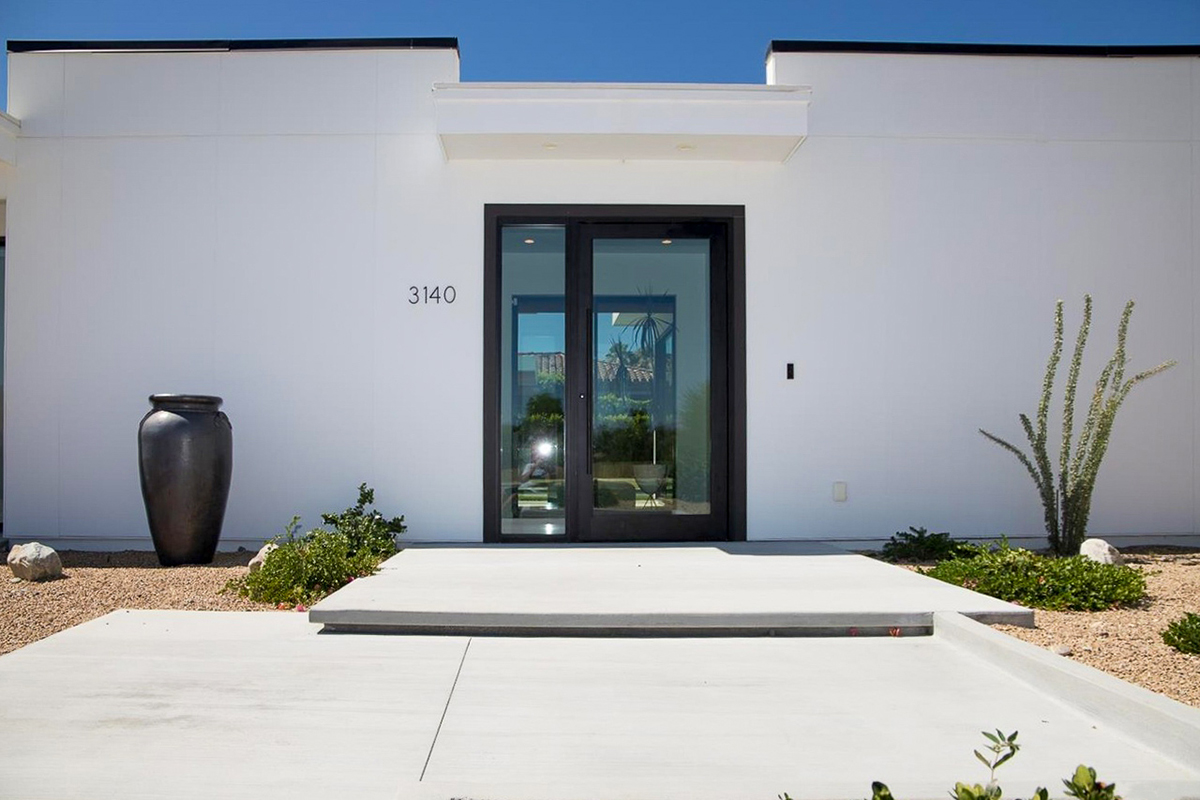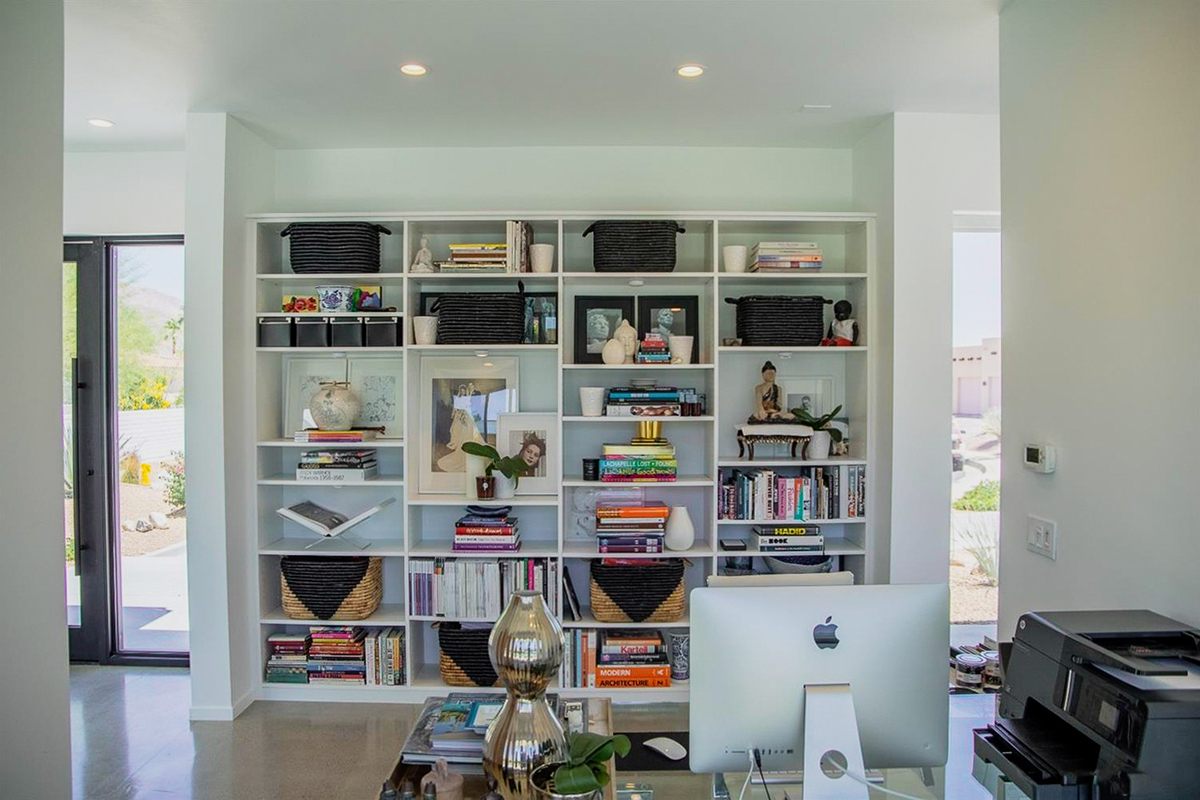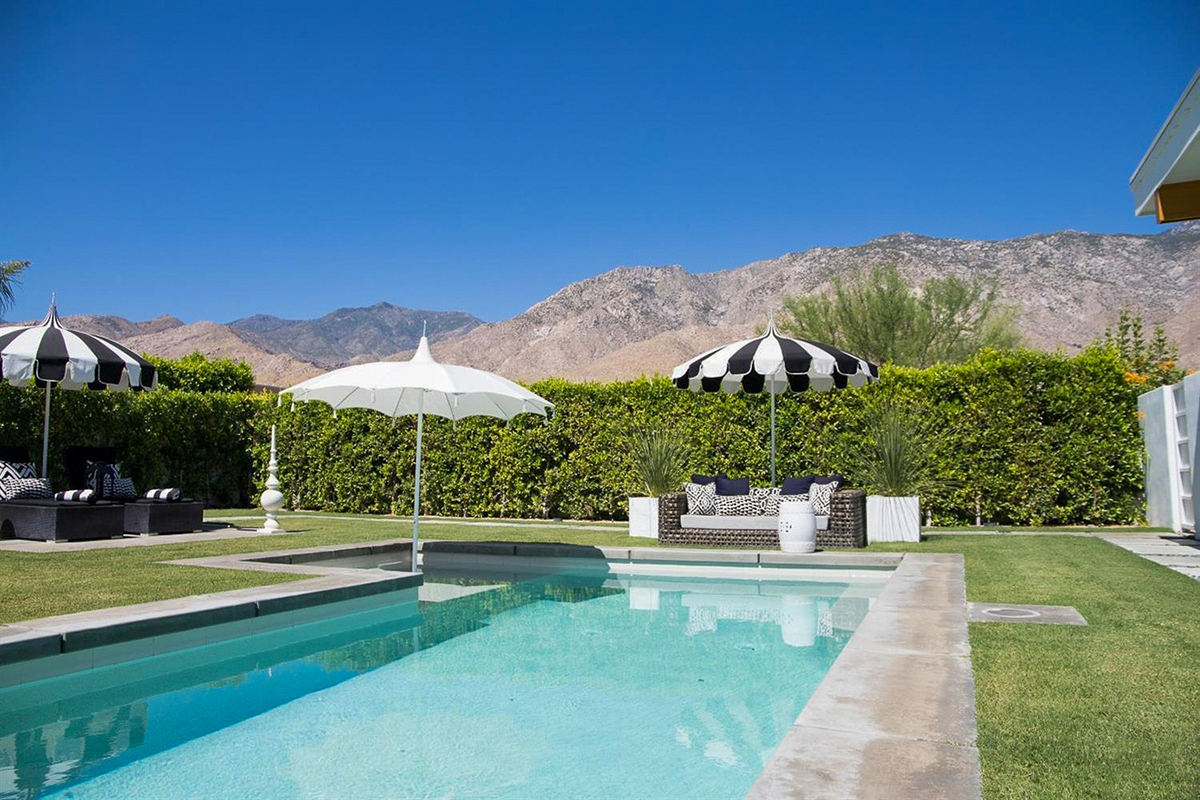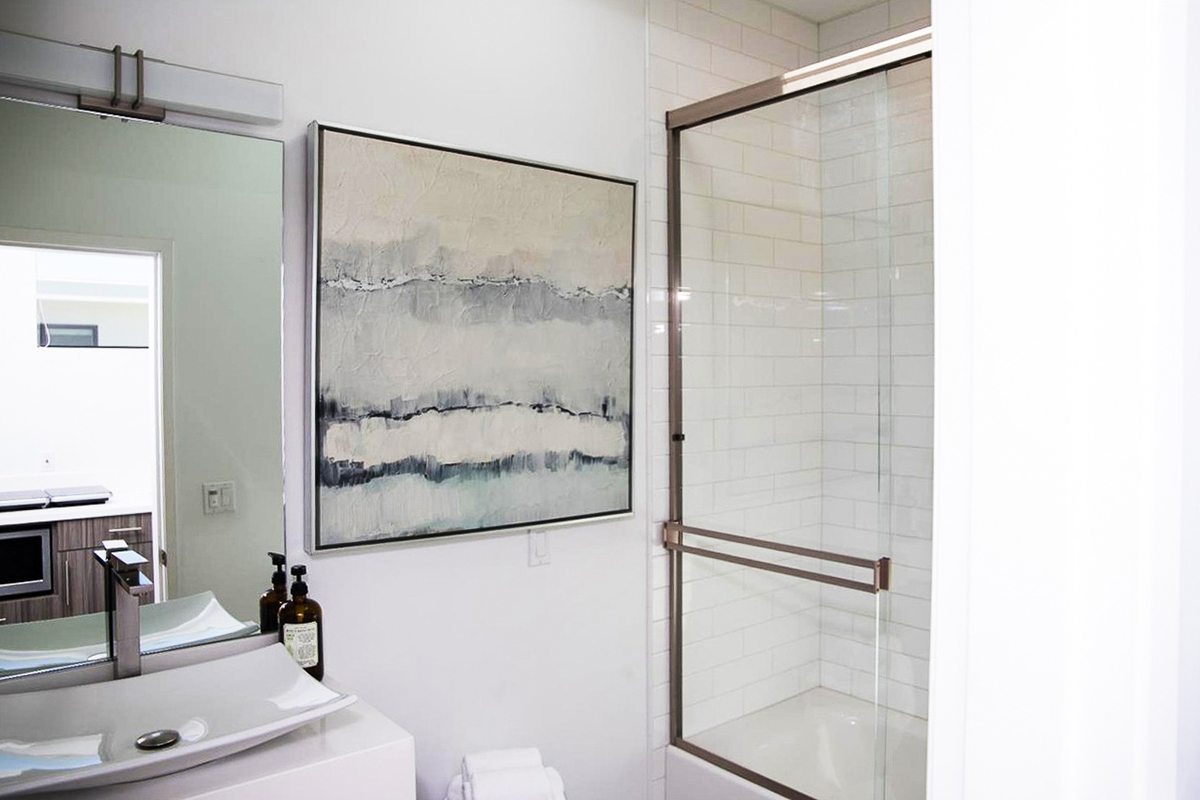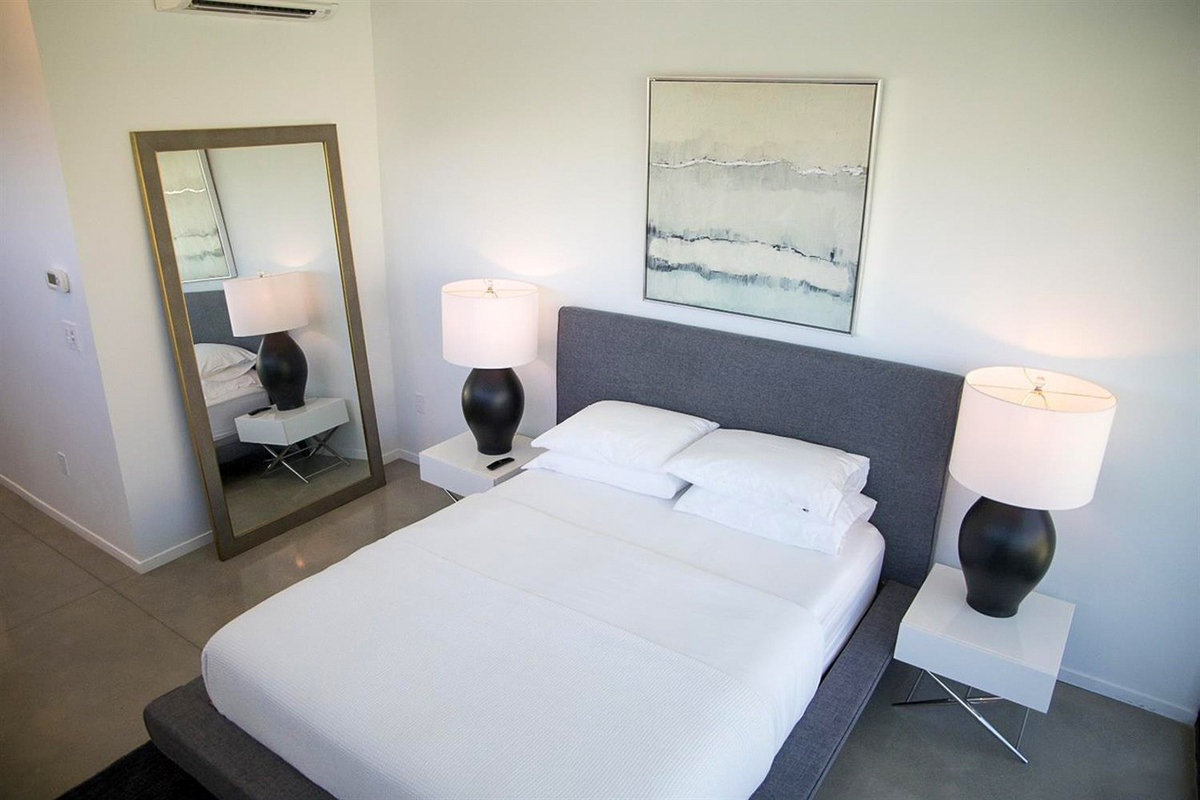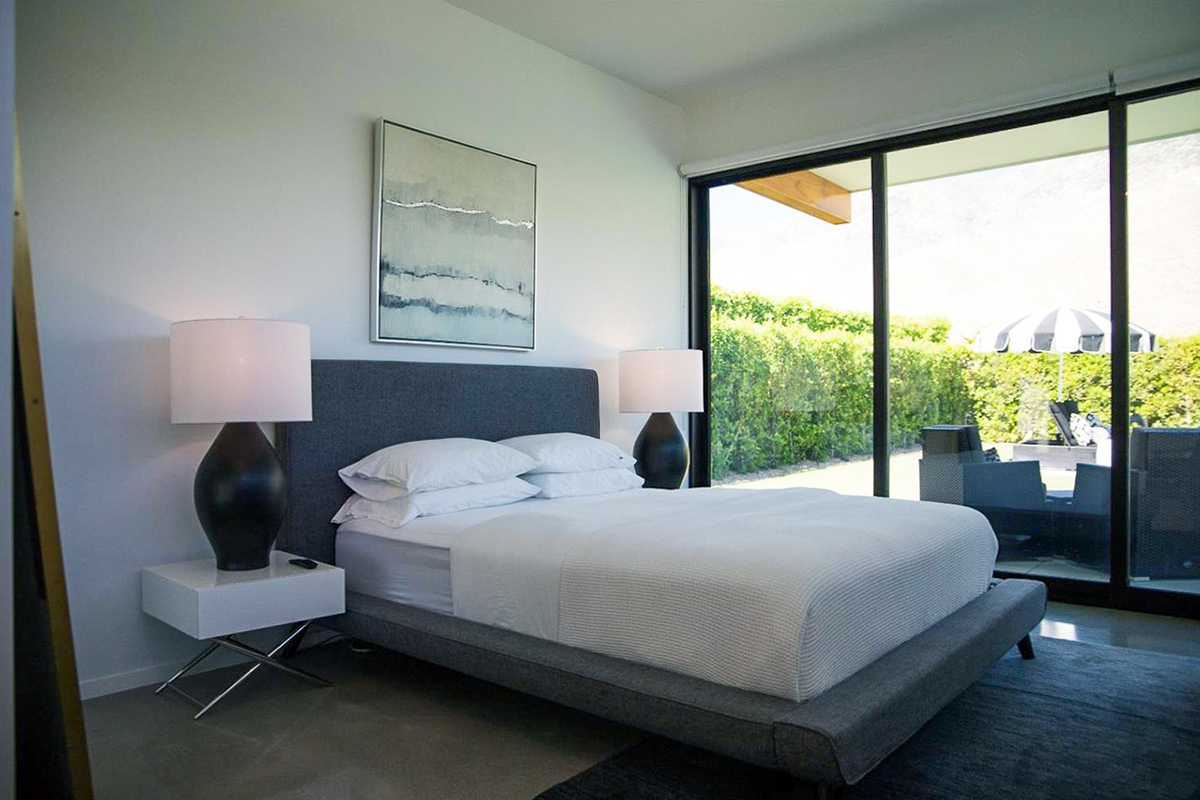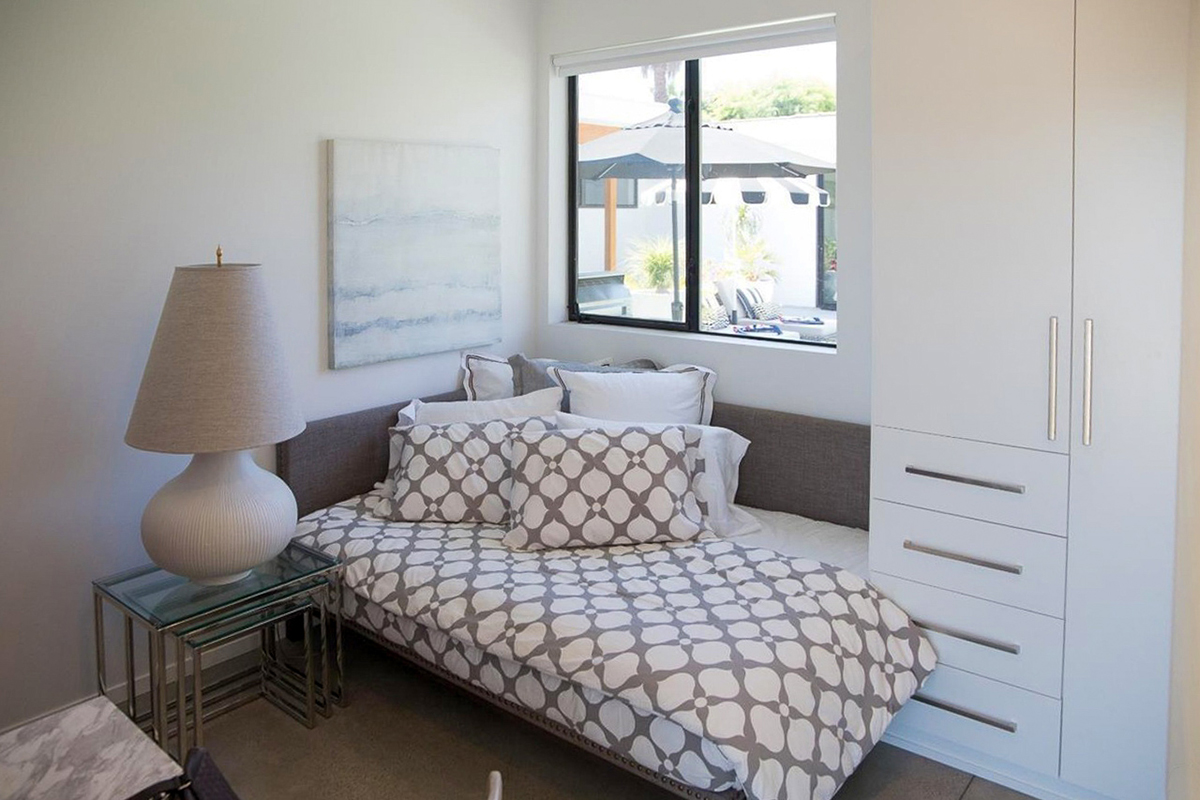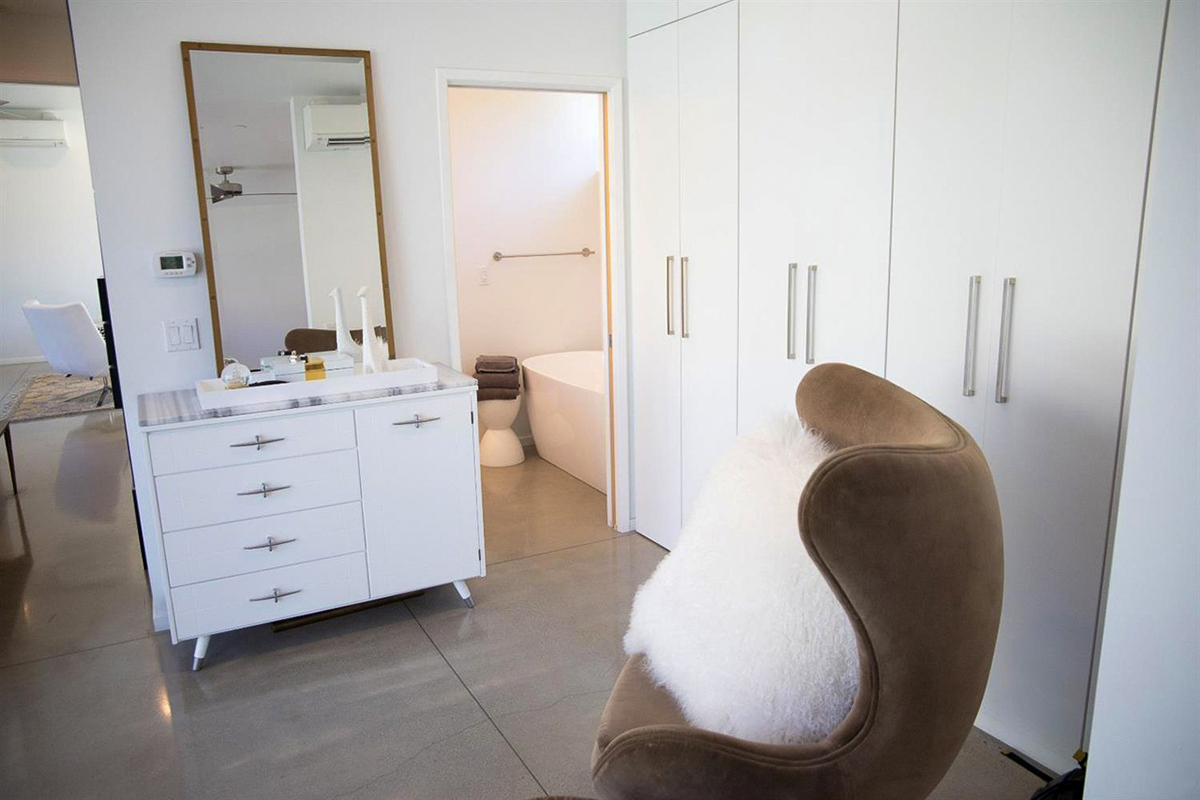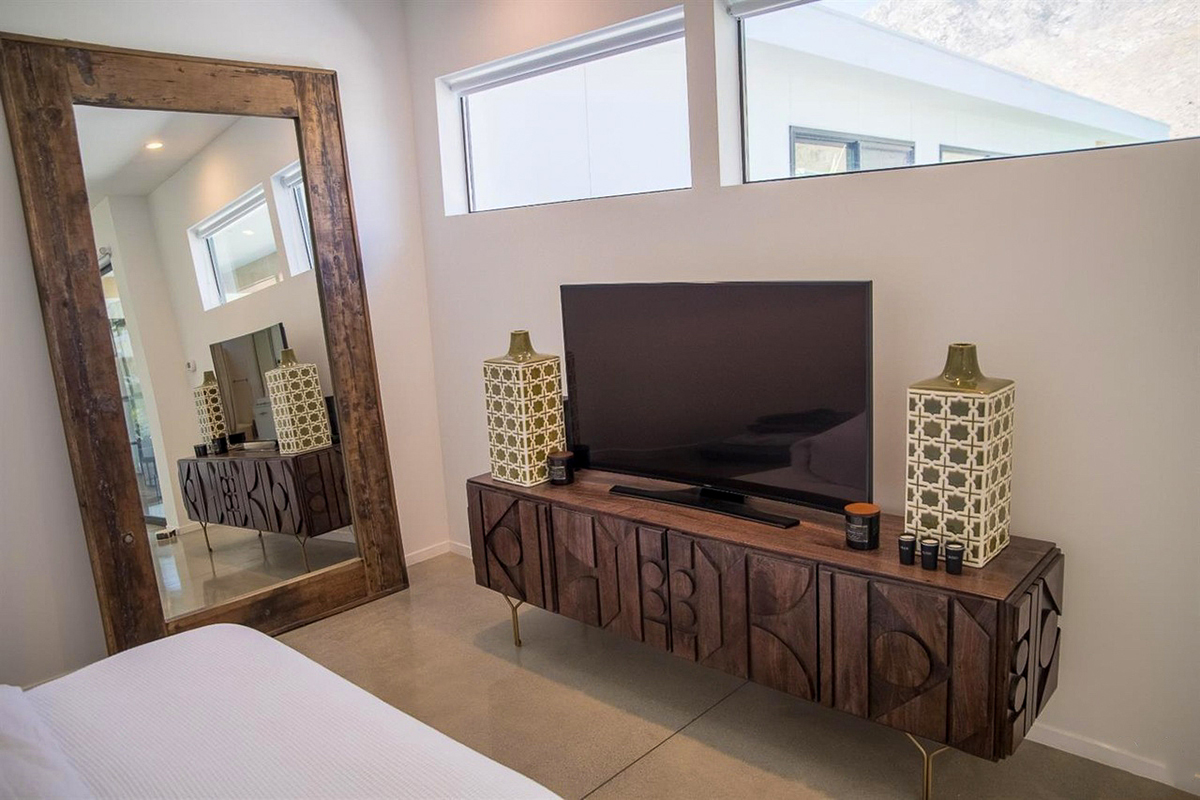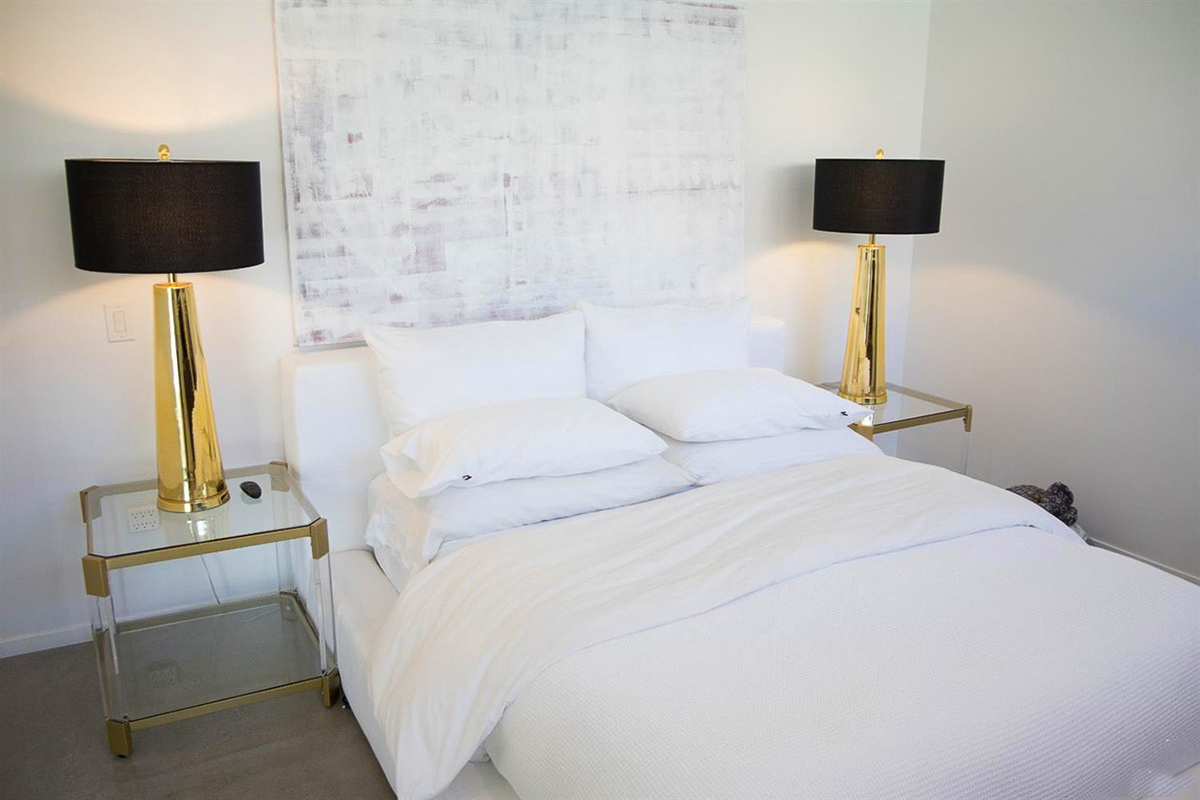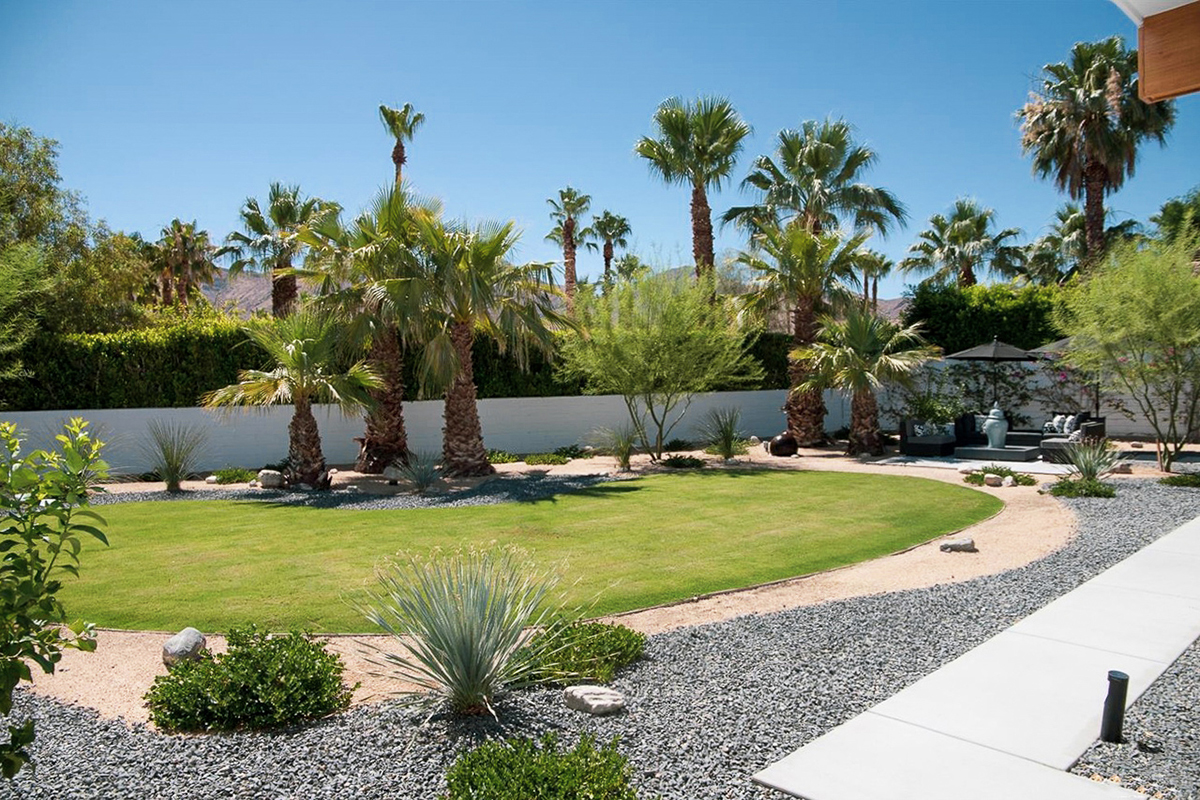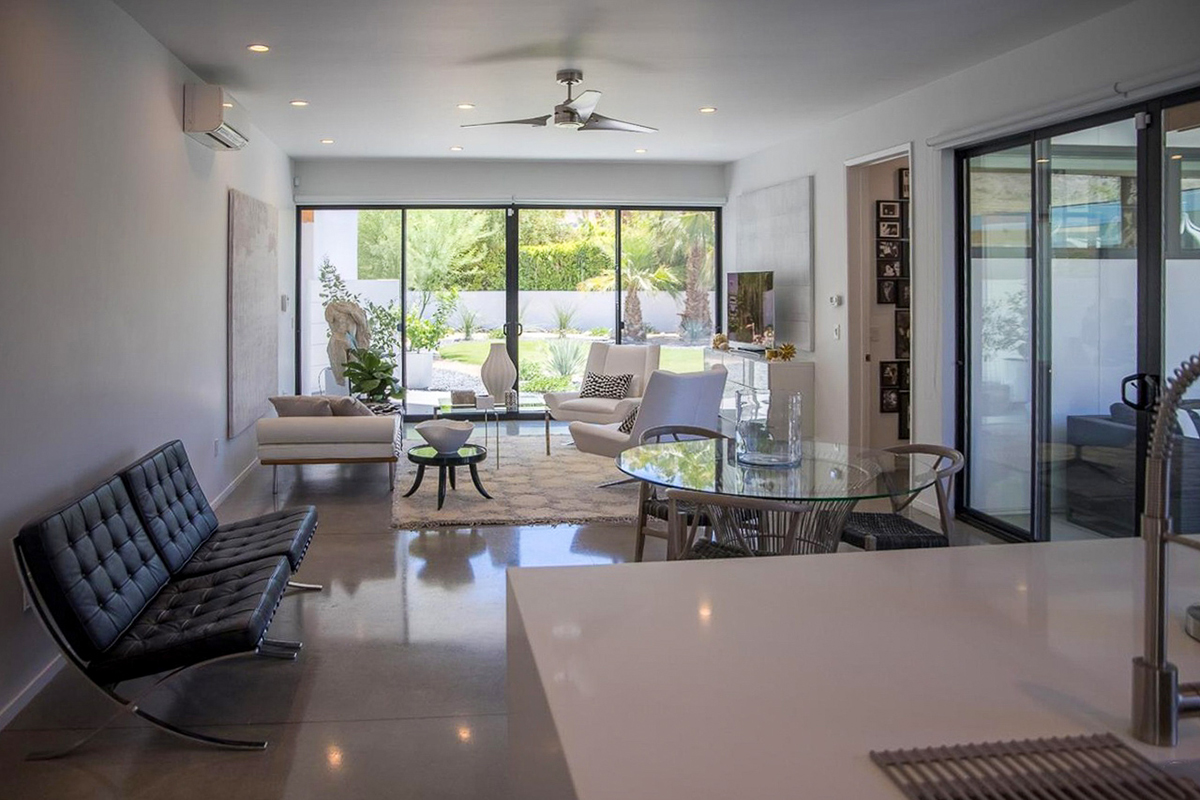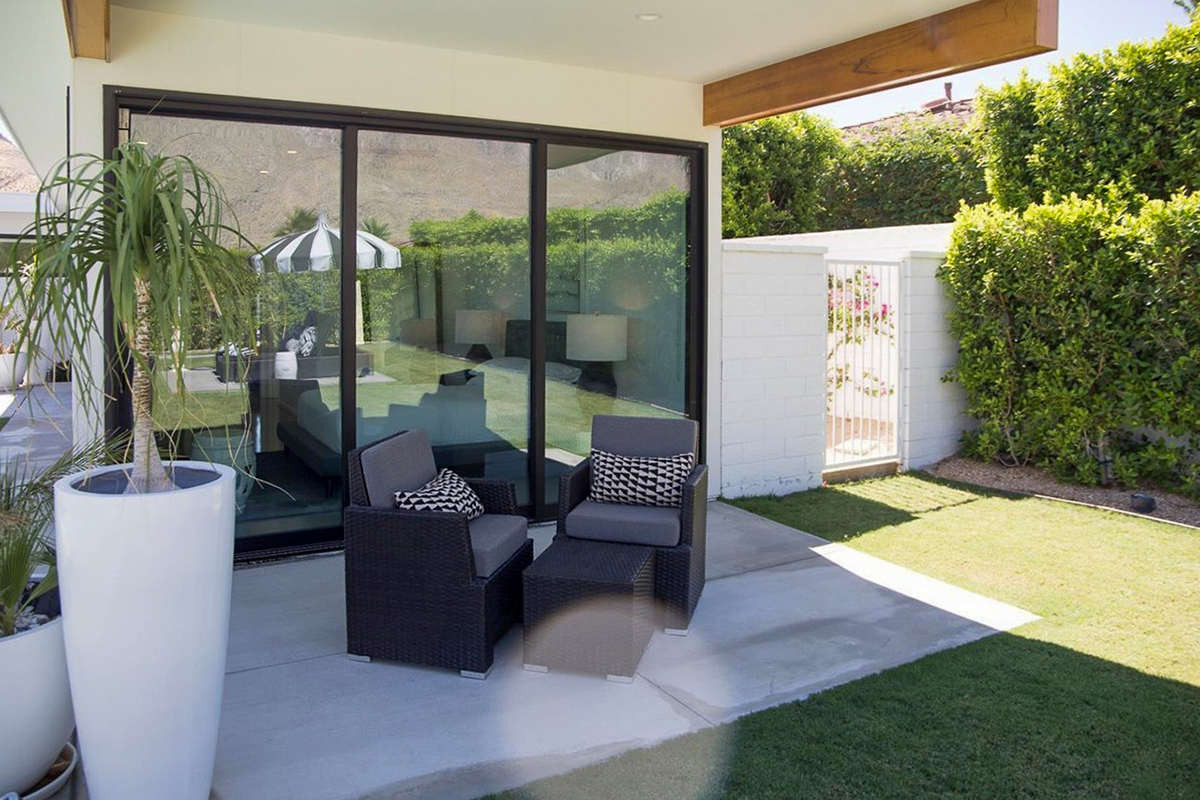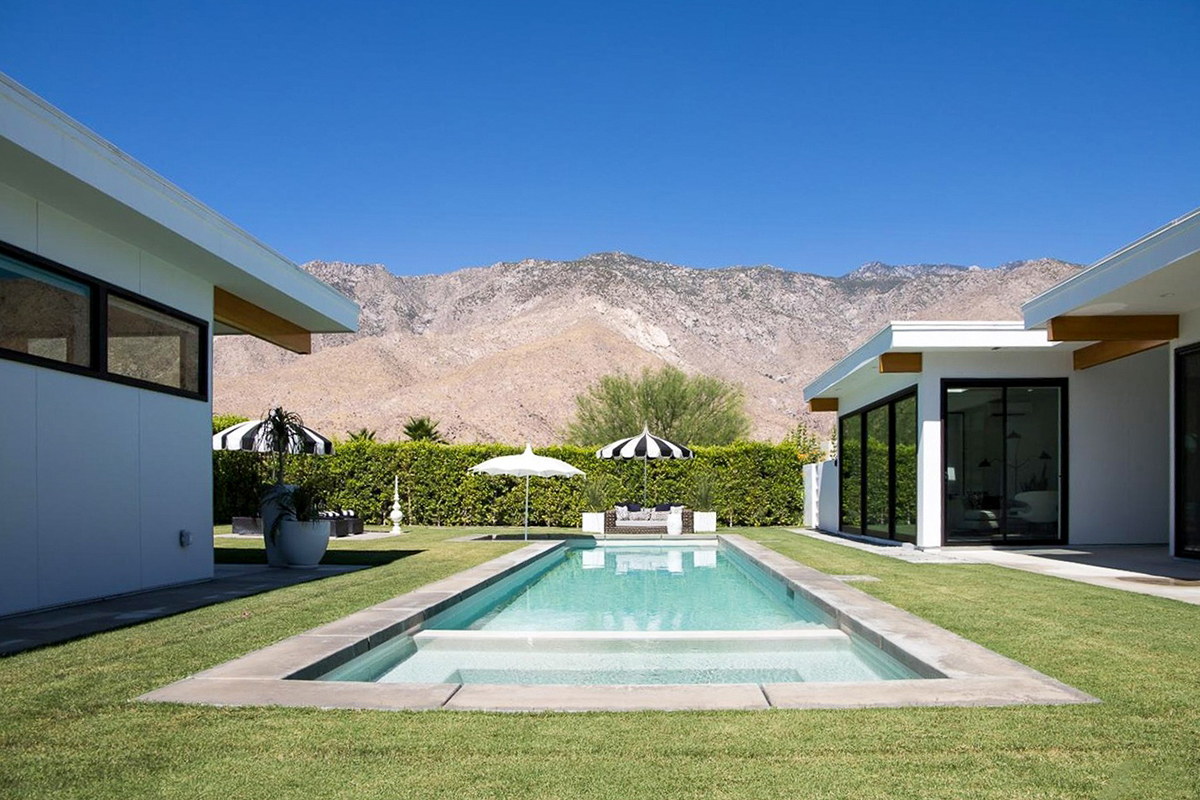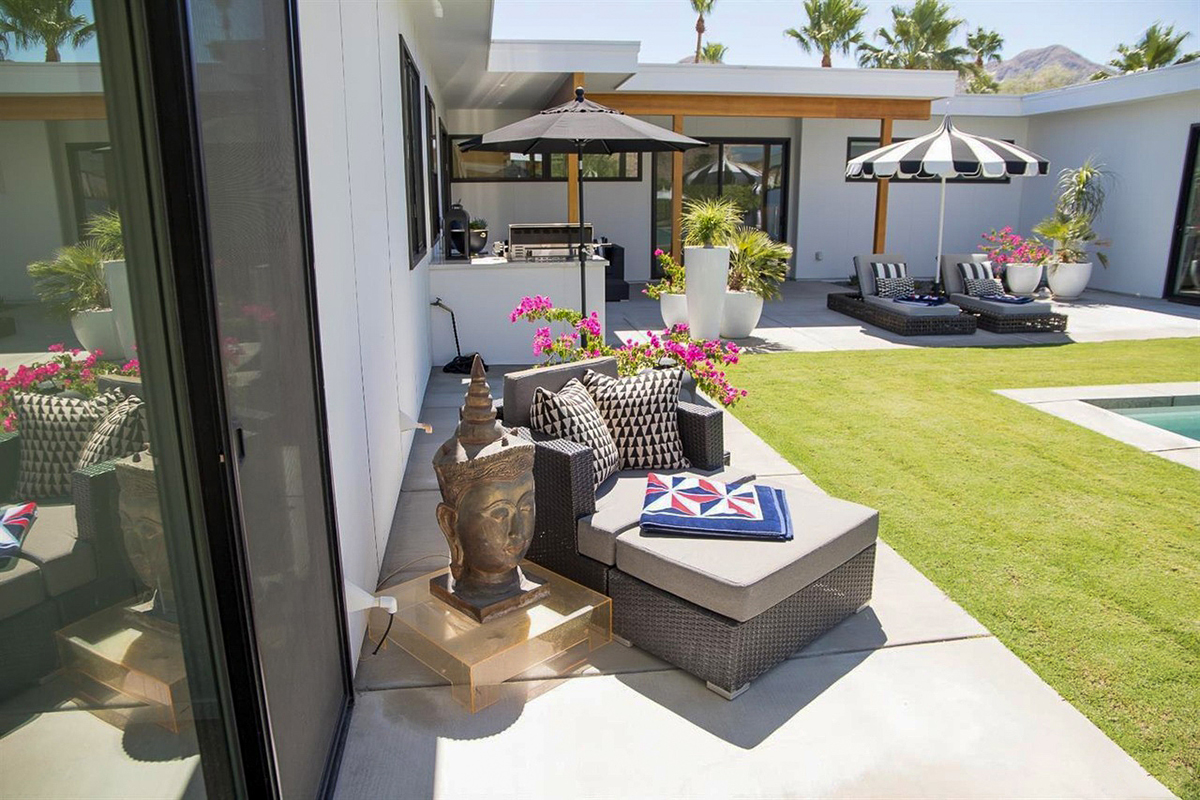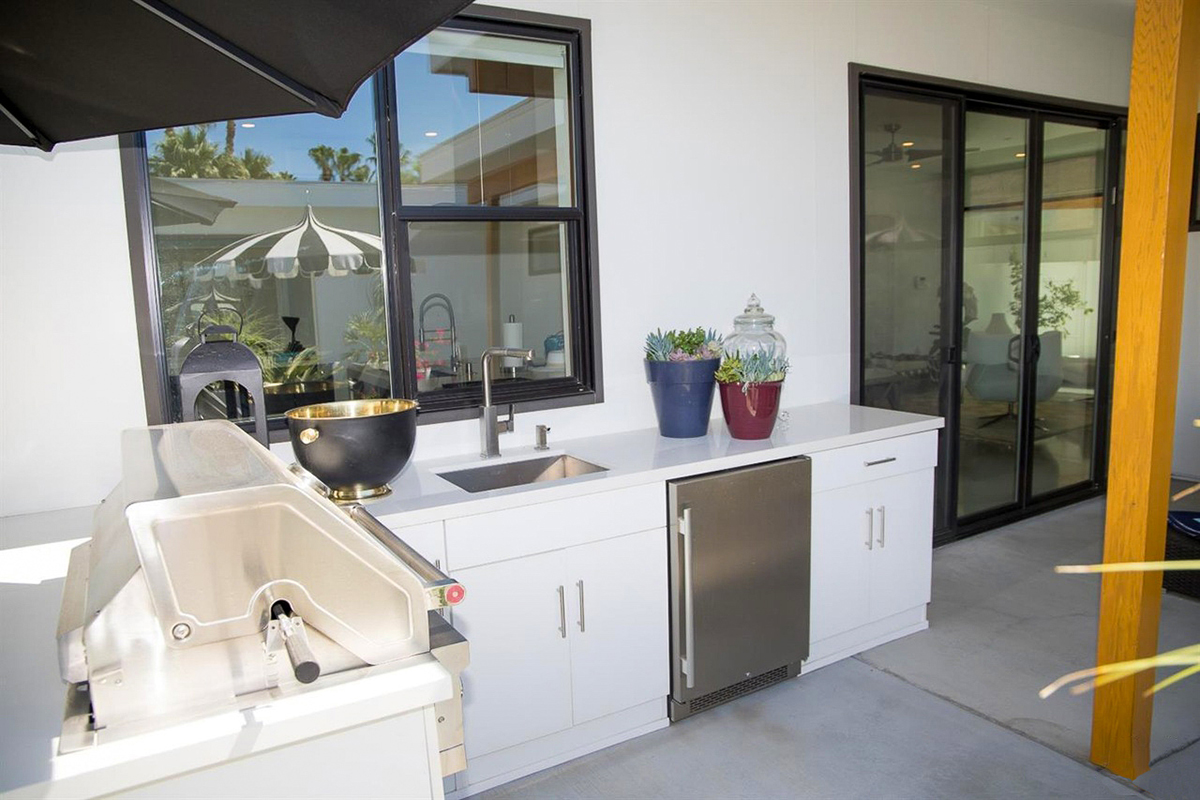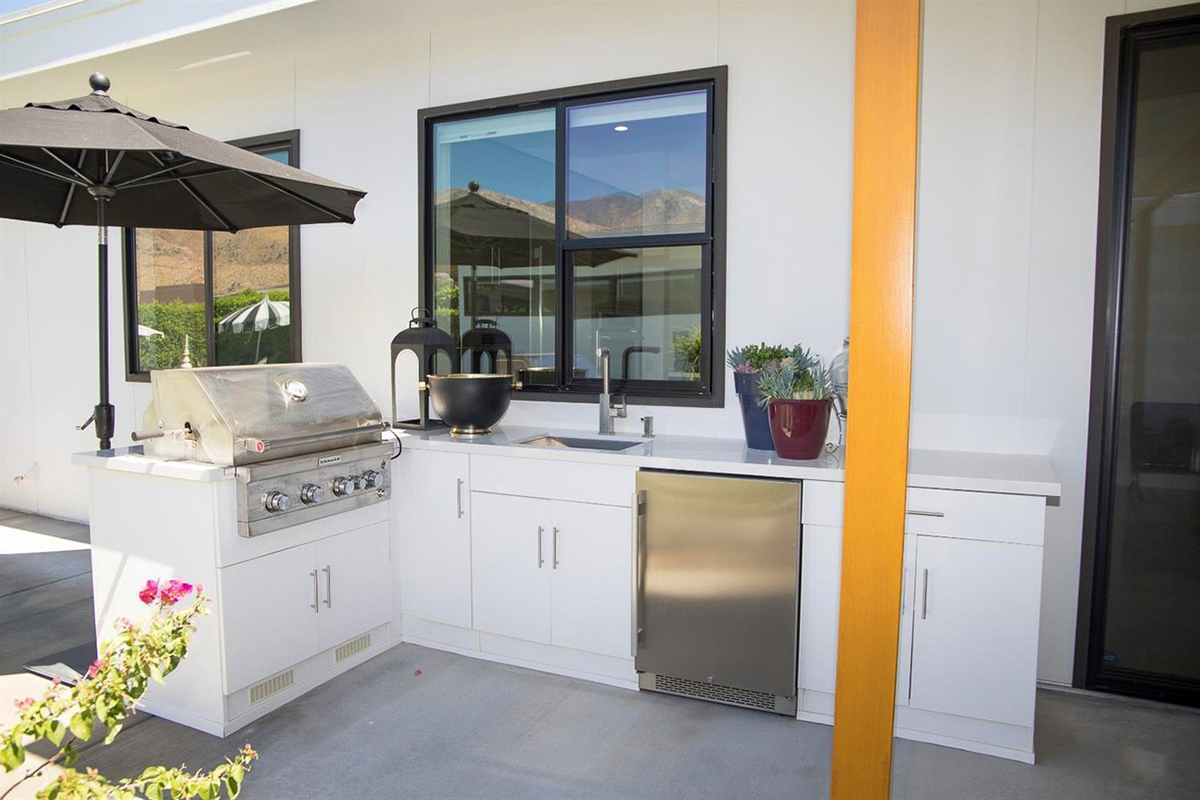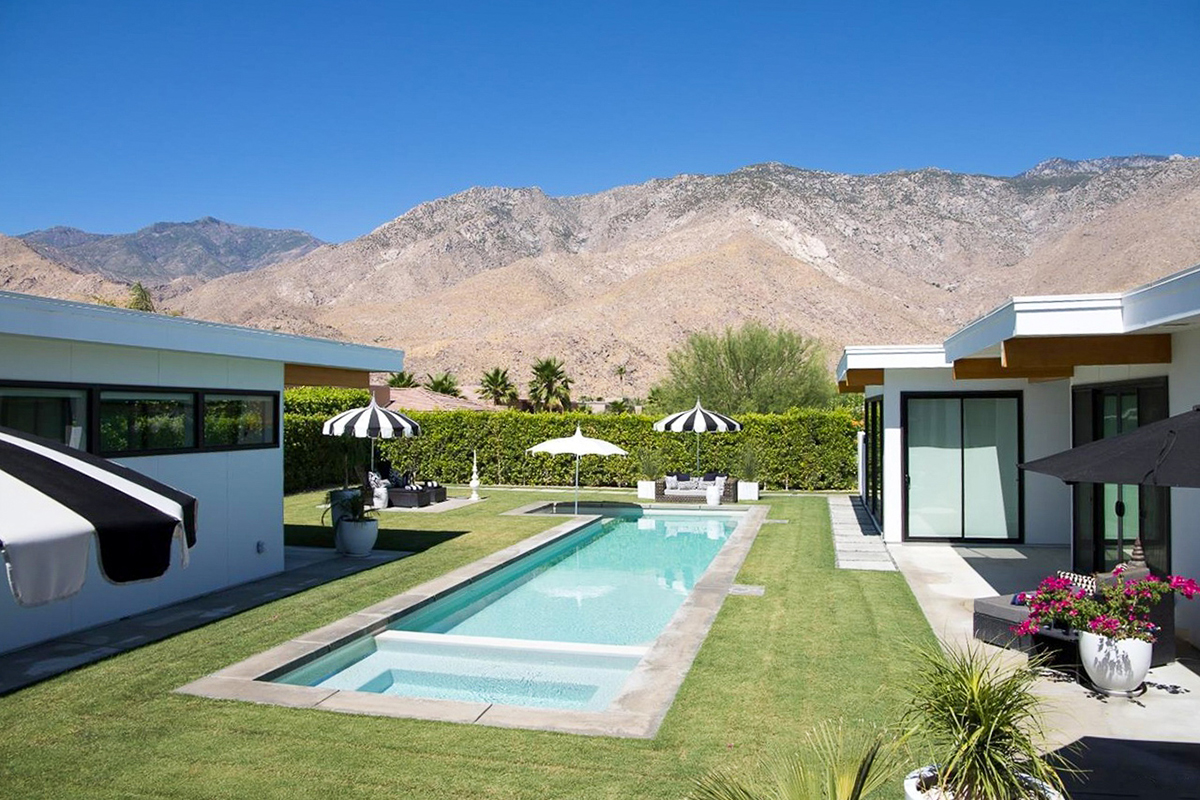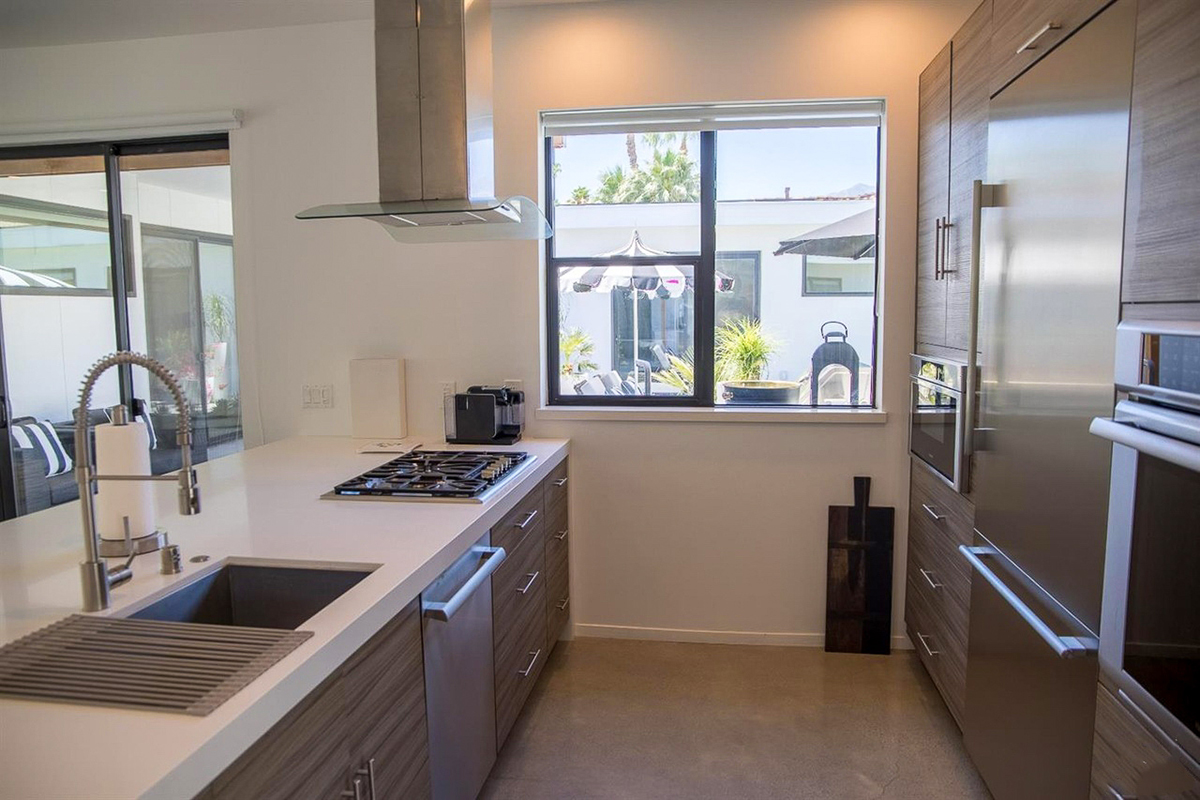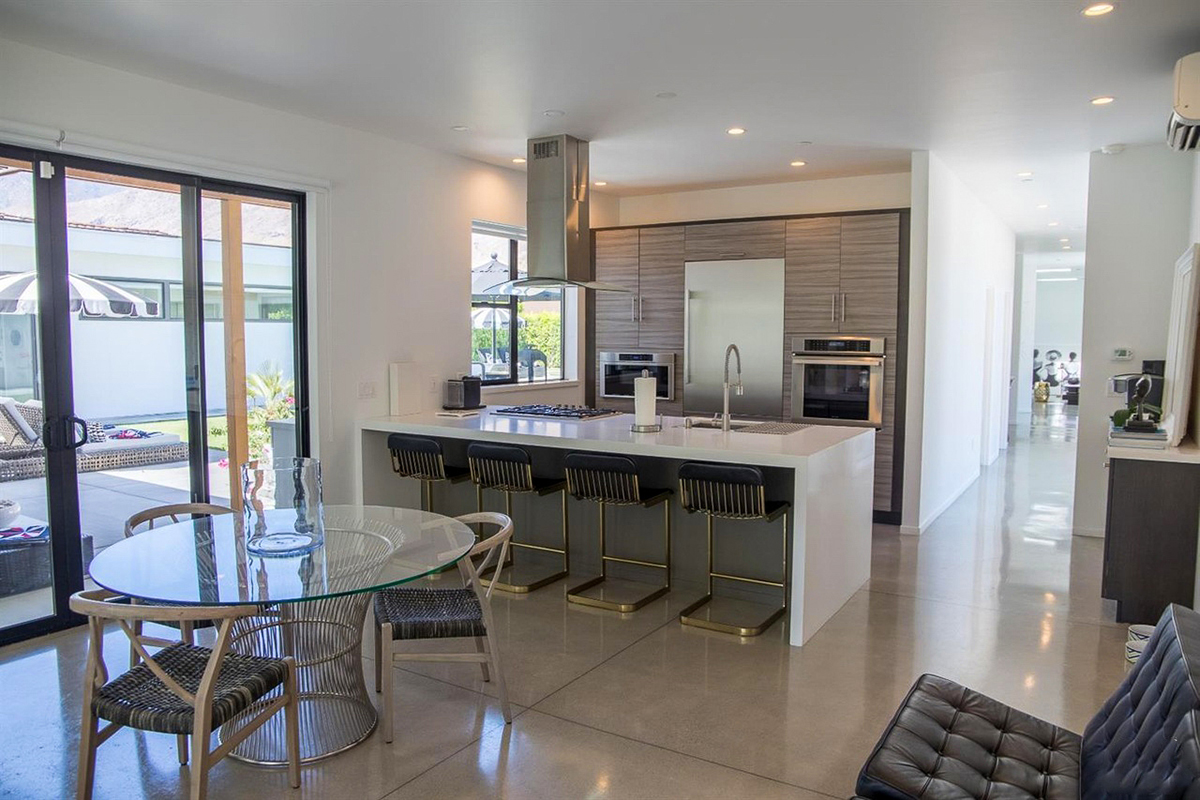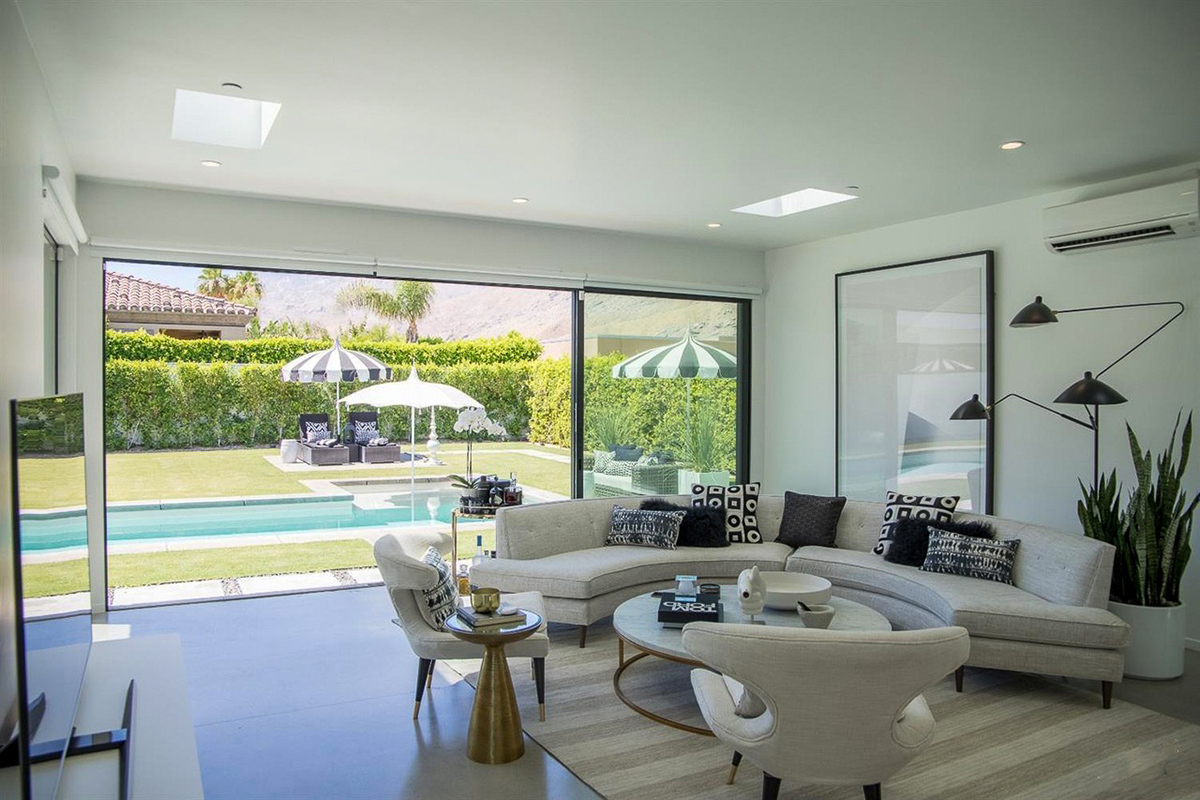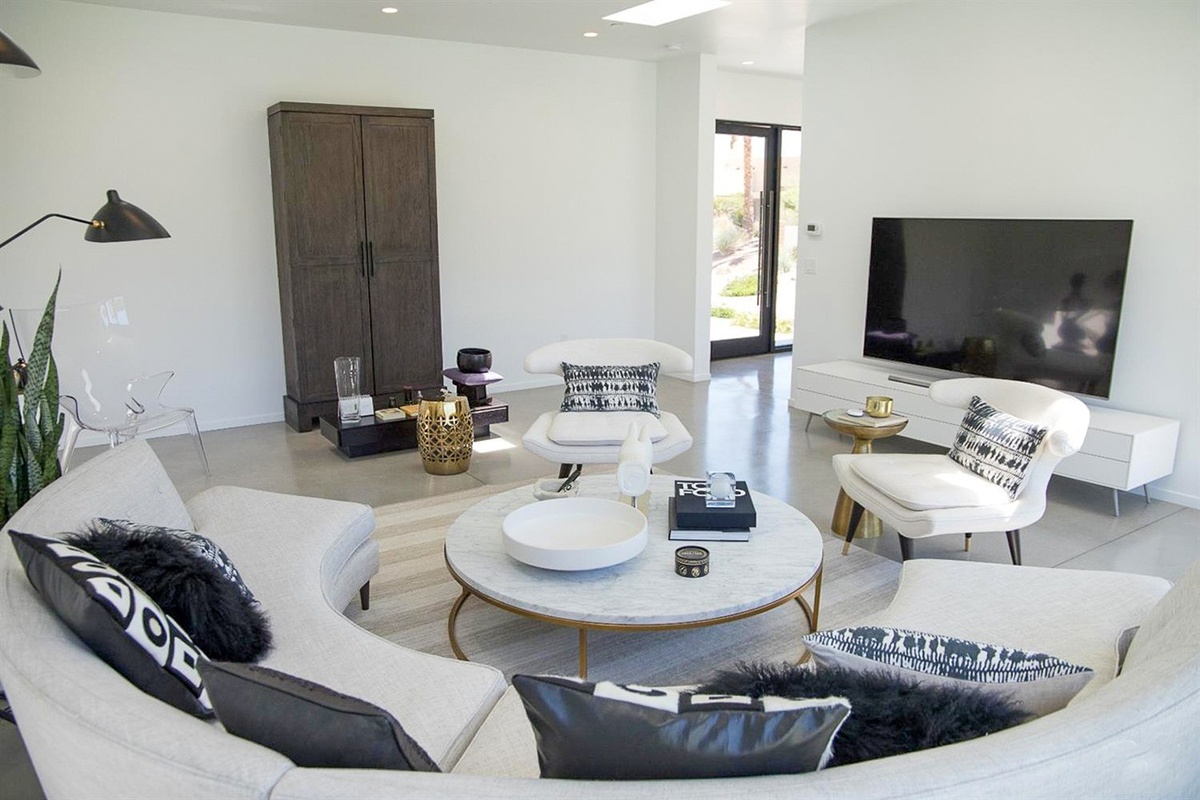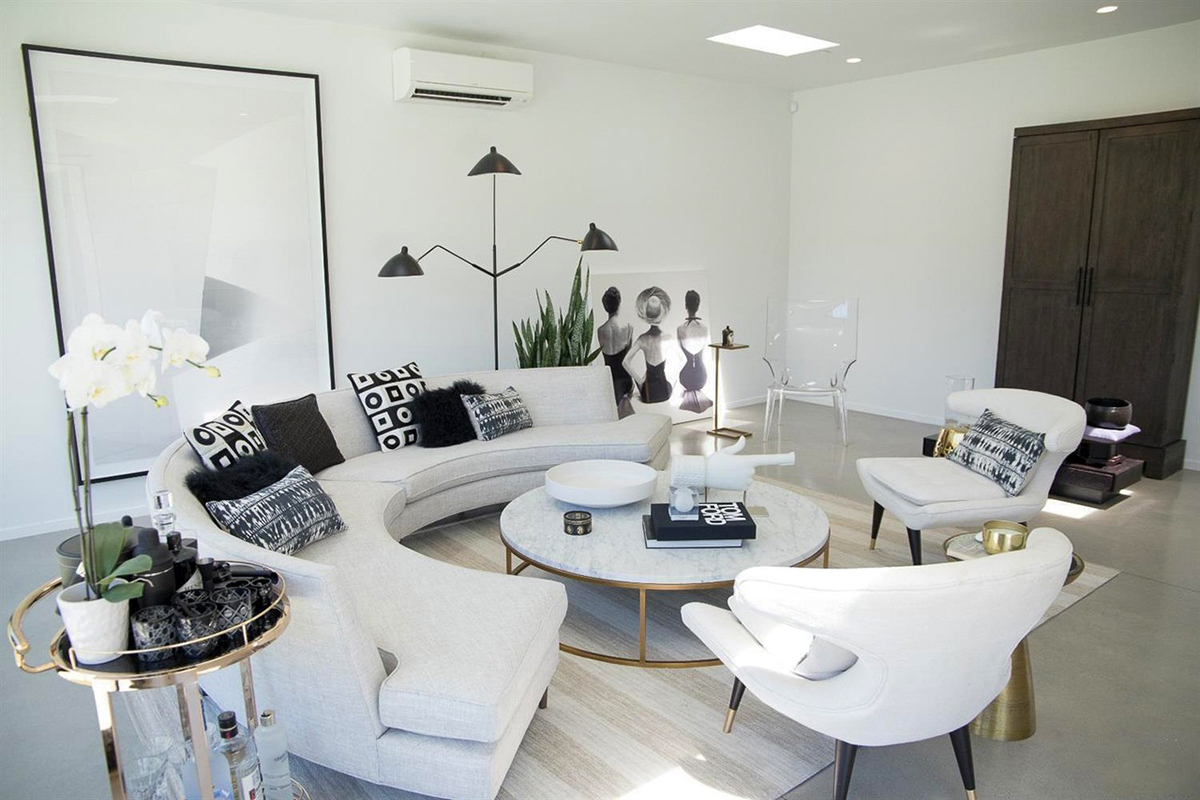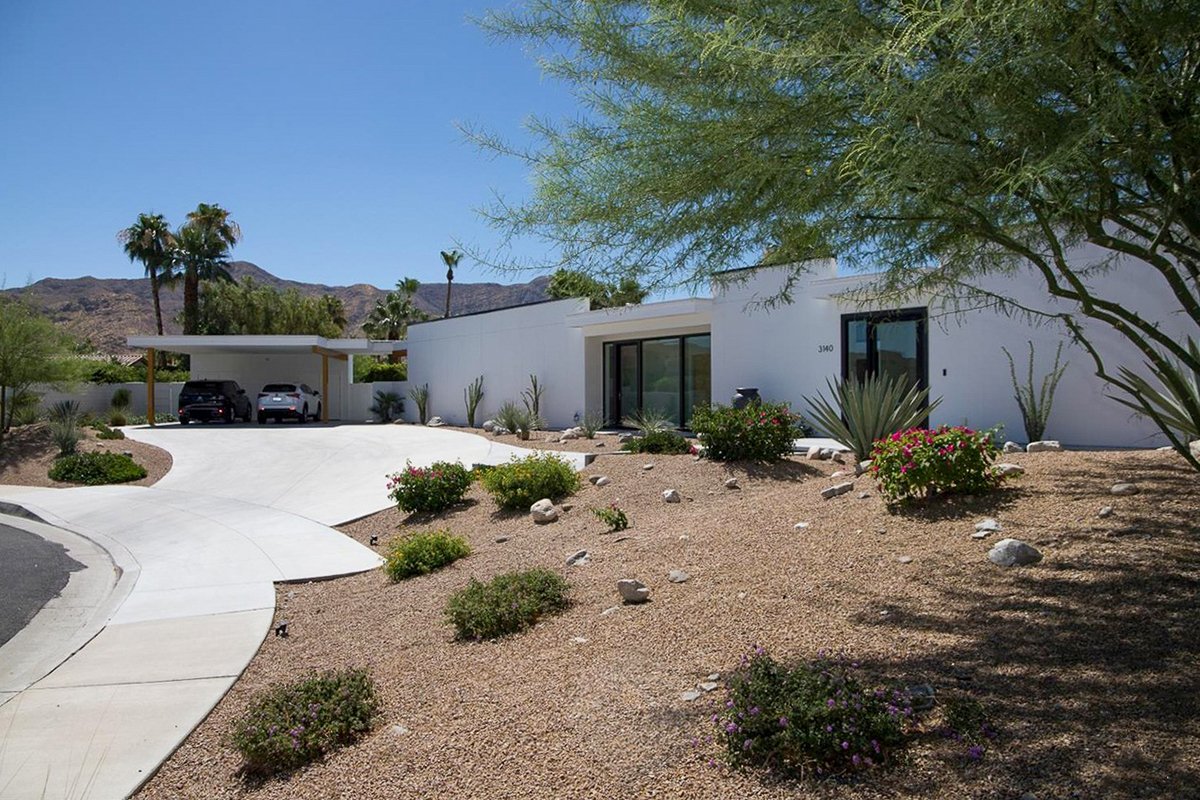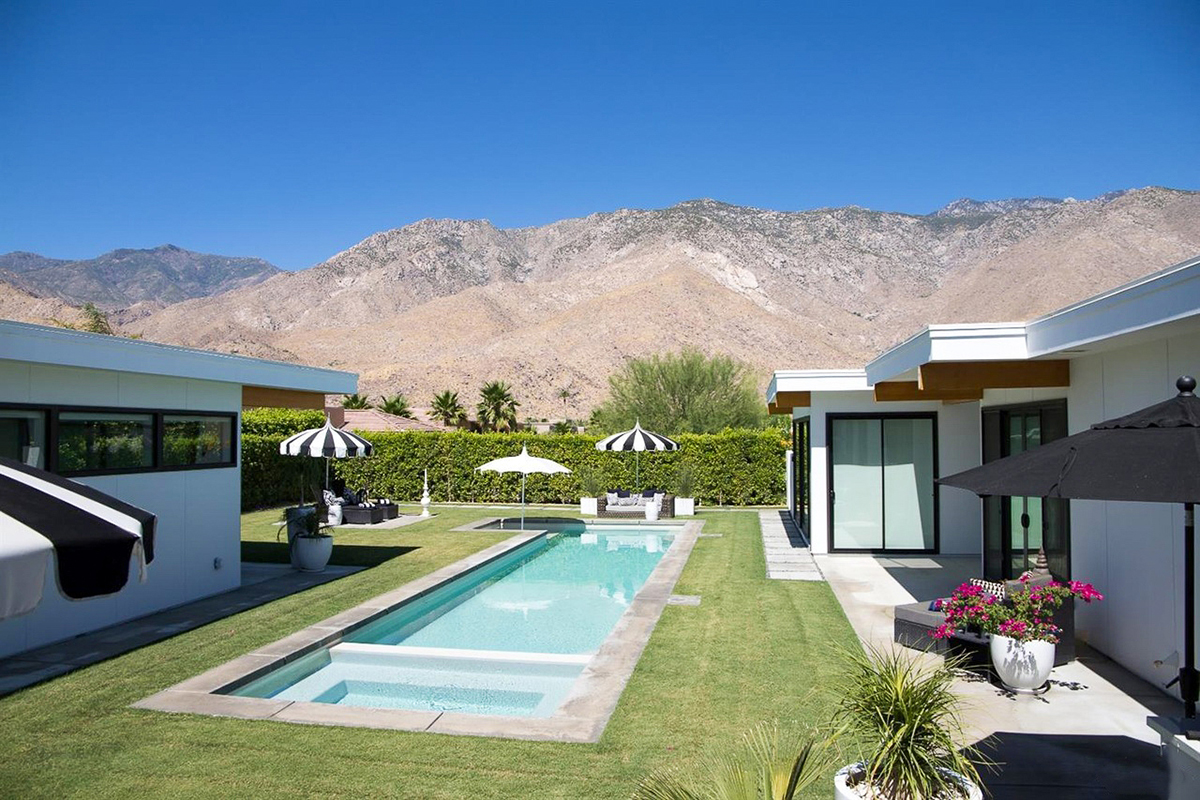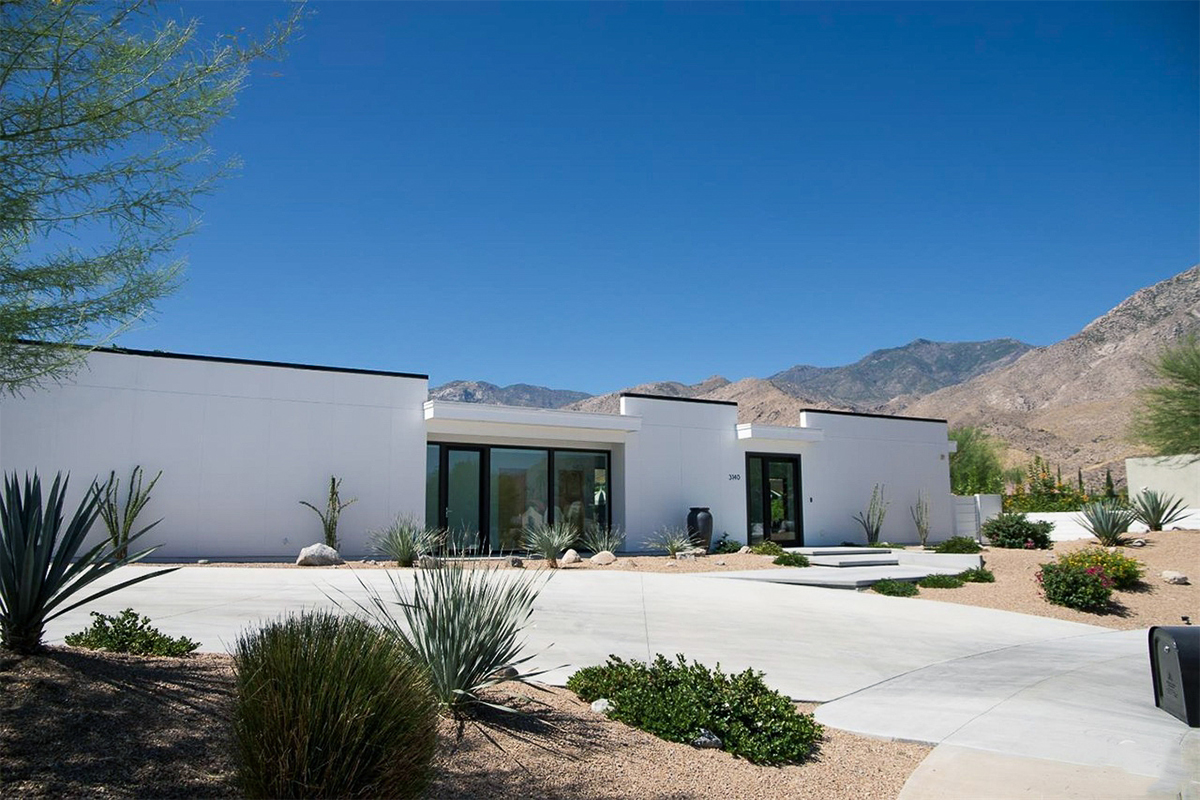The 180 House
The Desert Modernism movement began in the 1950s, as architects in southern California, inspired by the beauty of their surroundings, developed new homes designed to integrate with their environment. Today, the style remains popular with homeowners, celebrities, and cultural enthusiasts alike, due to the interplay between sophisticated design and the stunning mountain and desert vistas of the Palm Springs area.
How does The 180 House embody the principles of Desert Modernism?
In keeping with the original Desert Modernism aesthetic, The 180 House is a minimalist, single-story, flat-roofed post-and-beam design that emphasizes indoor-outdoor living.
The floor plan and materials were carefully chosen to adapt to the temperature extremes of the American Southwest and to frame the towering views of the San Jacinto Mountains. Clean lines, the extensive use of glass, polished concrete, and an open floor plan hold an elegant and sophisticated appeal that is synonymous with the Palm Springs lifestyle.
What are some of the “green-building” elements of this home?
The concrete floors keep the home cool, while Sun Coat® Low-E Glass reflects the heat of summer, yet retains heat in winter. The “Cool Roof System” reflects visible, inferred and ultraviolet radiation. The green building techniques and modern design stay true to the modernist-hip architectural landscape and legacy which makes Palm Springs one of the American capitals of Midcentury Modernism.
How did The 180 House come to life?
Inspired by the Taliesin Mod.Fab designs created by the Frank Lloyd Wright School of Architecture and sold by Lindal Cedar Homes through the Lindal Architects Collaborative. With that inspiration, California LivN Homes began a series of drawings to reawaken the Desert Modernism aesthetic. Working in collaboration with the owner and the Lindal design team, a private art studio and carport were incorporated. A stand-alone guest wing was added as a private living space, or castia. The castia includes a bedroom, bath, kitchen, and living area. It has its own covered patio and private access to a courtyard pool. We put together a video of The 180 House to show how the various elements came together.
What kind of design/build challenges did you experience with this project?
As with most building projects in Southern California, city codes can be challenging. This project had to comply with codes and requirements of two municipal interests. First, the City of Palm Springs. Second, the Agua Caliente Band of Cahuilla Native Americans, on whose tribal land the lot exists.
Numerous meetings took place between the city, the tribe and California LivN Homes to address design requirements without sacrificing the character of the house, while also different materials and a telehandler rental to move them.
An original 1,200 square-foot design quickly grew to 1,500 square feet to meet the requirements of the City of Palm Springs, then ballooned to 2,650 square feet to satisfy the expectations of the tribal community.
During the initial lot survey, a difference between the legal lot lines and what was actually seen on the ground was discovered. It turns out a neighbor’s wall had been built some 30 feet over an adjoining property line. If people need advice on how to take care of their property, they can check eXp Realty and get expert advice. Through patient negotiations, California LivN Homes was able to secure an agreement to share the cost of a beautiful new wall so that both properties would again conform to their legal plotted boundaries. Good fences do indeed make good neighbors!

